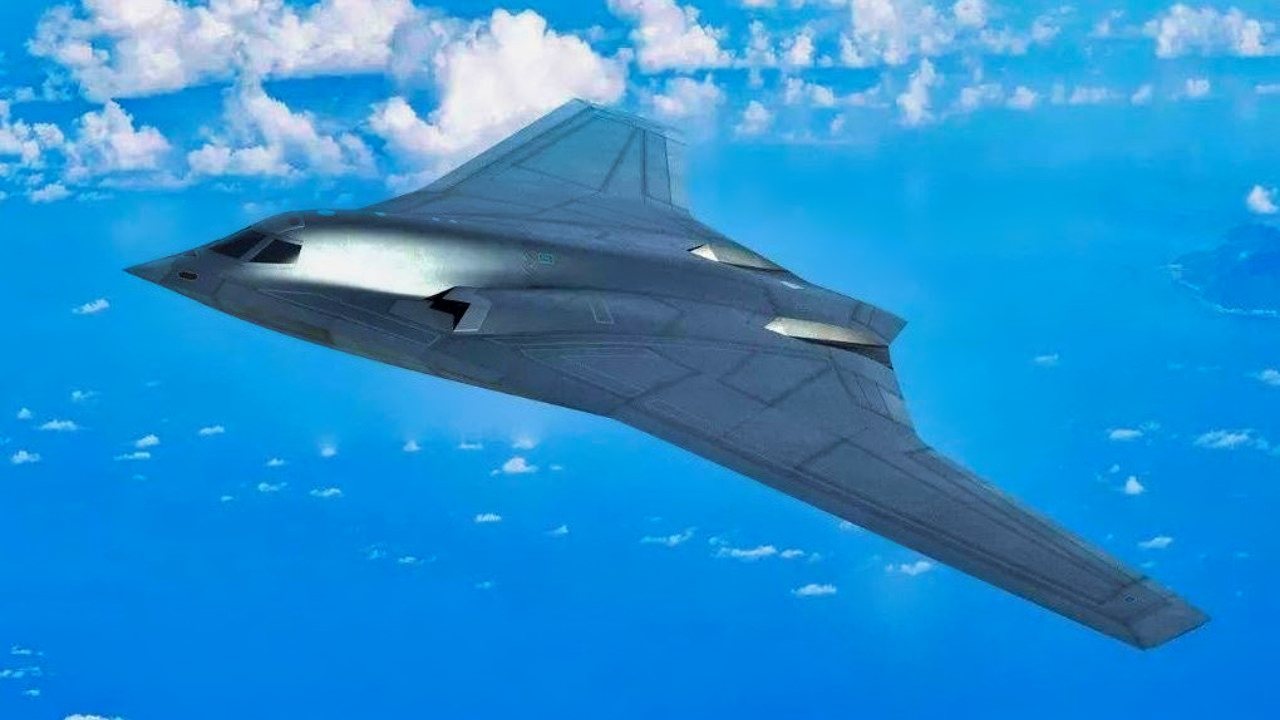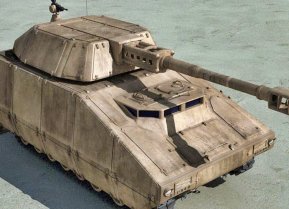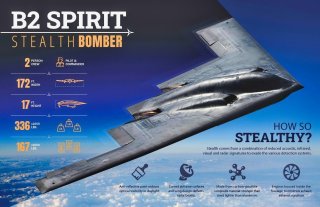Can China’s New H-20 Stealth Bomber Top America’s Best Planes?
It is not clear that China’s new H-20 bomber will even fully rival the aging American B-2 bomber.
Since as far back as 2018, the Pentagon has been warning that China’s new H-20 long-range stealth bomber could potentially introduce paradigm-changing threats. Most notably, the H-20 is expected to operate with a range of 8,5000 kilometers, which would hold previously unreachable areas of the United States at risk.
While much is not known about the H-20 bomber, its external configuration and horizontal blended wing-body resemble a U.S. B-2 or B-21 bomber. As for its ability to compete with a B-2 or B-21, there may simply be too many unknowns. However, a few things do come to mind. The B-21’s airframe, for instance, appears to have little or almost no external exhaust pipes, raising the question as to whether it incorporates new thermal management or heat dispersion technologies. A key goal when it comes to designing stealth bomber airframes is to work toward having them mirror or align with the surrounding temperature of the atmosphere so as to be less detectable to thermal sensors. Also, while many of the B-21’s details remain classified for security reasons, senior Air Force leaders have said that the platform contains a new generation of stealth technologies and can “hold any target at risk in the world at any time.”
This suggests that the Air Force is confident that the new B-21 will be able to succeed against the most advanced air defense systems. An ability to elude both surveillance and engagement radar would be quite an accomplishment, as advanced Russian air defenses such as the S-400 and S-500 contain a new generation of technologies. Not only do they use digital networking to connect radar nodes, rely upon faster computer processing, and track aircraft on a wider sphere of frequencies, but they can also detect “stealth” aircraft—at least according to Russia. This may be unproven at the moment, but it has still inspired U.S. weapons developers to seek new paradigms for stealth technology.
Moreover, the sophistication of these advanced air defenses may be one reason why, at least when it comes to stealth fighters, senior Air Force weapons developers describe stealth as merely “one arrow in a quiver” of methods to evade and destroy enemy air defenses. Nonetheless, there is no available evidence to suggest that the new B-21 would have any difficulty against the most advanced air defenses; debates along these lines are likely to persist for years. Still, Air Force officials say that the B-21 will be virtually “undetectable.”
Finally, it is not clear that China’s new H-20 bomber will even fully rival the American B-2 bomber. While the B-2 may be thought of as a somewhat antiquated platform, years of Air Force upgrades have vastly changed the performance parameters of the bomber. The B-2 is now being engineered with a so-called Defensive Management System sensor, which is designed to find enemy air defenses, allowing pilots to fly around them. The B-2 is also being outfitted with a much faster computer processor and is being configured to integrate new weapons platforms, including the upgraded B-61 Mod12 nuclear bomb. Finally, much like what is reported about the H-20, both the B-2 and B-21 are engineered to carry and fire long-range nuclear and conventional cruise missiles such as the Air Force’s emerging Long Range Standoff Weapon.

As a result, the current B-2 bomber, which is now being engineered to fly alongside the B-21 bomber until sufficient numbers of B-21s are available, is nothing like the aircraft that initially emerged in the late 1980s. Along these lines, both the B-21 and B-2 are built with “open architecture,” which is intended to lay down a technical apparatus sufficient to sustain perpetual upgradeability.
Kris Osborn is defense editor for the National Interest. Osborn previously served at the Pentagon as a Highly Qualified Expert with the Office of the Assistant Secretary of the Army—Acquisition, Logistics & Technology. Osborn has also worked as an anchor and on-air military specialist at national TV networks. He has appeared as a guest military expert on Fox News, MSNBC, The Military Channel, and The History Channel. He also has a Masters Degree in Comparative Literature from Columbia University.


